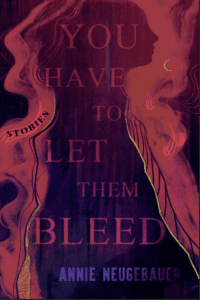[Not feeling the sonnet stuff? Skip to the prose discussion. ]
Now that you have gathered the DNA for your sonnet, it’s time to connect the knee bone to the thigh bone, so to speak. But before you get all overwhelmed: we aren’t writing yet. Don’t forget to breathe. =) Also, your skeleton will have gaps. That’s okay. Preferable, even. Too much structure can make it hard to go where your creativity takes you.
Now I am going to assume that most of you are more comfortable with prose than with verse. Given that assumption, jotting down your idea in paragraph form doesn’t sound so scary, does it?
Open up a Word document (or get out a notepad). Using the idea that you’ve chosen to write about as the seed, start writing. It doesn’t have to be in order, and it doesn’t have to be concise, well-worded, or perfectly logical. It can be in fragmented sentences if you want. Just get all of the thoughts you have down in text. Do keep in mind what we talked about last time: working toward the “punch-line” (couplet). Once again, no one is going to see this part of your process, so don’t censor yourself and don’t worry about quality or making it sound just right.
At this point, I search my paragraph for potentially rhyme-able words that carry enough significance to be used in the poem. I bold and highlight them for easy reference. I usually don’t end up using all of these, and I use several that I didn’t find at first. (If you’re interested, you can watch me build this sonnet snippet below to completion in my archives of last year’s NaPoMo series.)
A note about rhyming words: due to the fact that sonnet lines are in iambic pentameter (meaning they consists of a series of unstressed syllables followed by stressed syllables – another word for stressed here is emphasized), your end rhyme words must be stressed. In other words, they need to be “sharp” notes, like door, stand, or the last syllable in convey – not “weak” notes like the 2nd syllables in running, silent, or happy. If you pick a rhyming word that’s unstressed, you’ve set yourself up for imperfect meter. So go for stressed words that lots of things rhyme with. It might look something like this:
I don’t realize there’s a man in my car until I’m almost to the door. He is shadowy and sitting in the driver’s seat. I stare at him in shock from only a few feet away and he smiles. Panicked, I use my car remote to lock the door. The mechanical click rings through the dark, empty parking lot. He reaches up with long thin fingers and unlocks it—the sound is muted. I begin to back away as I thumb the “lock” button again. He unlocks it again from inside the car. I am speeding backwards now, stumbling on my feet. He is laughing through the silence of the car window. This is a game to him. I lock the door. He unlocks it. I lock it. He unlocks it. I lock it—but this time there is no mechanized click. I realize that I am too far away now; the battery can’t reach anymore. I glance around me. The parking lot is empty and the store is closed. I have nowhere to go, nowhere to run. With that sickening grin, he pulls up the manual lock from the inside and opens the car door.
You’re almost finished with step 2! Hang in there.
Next I make my template. I usually take a couple of lines from another sonnet to get my mind into the meter of the form. (In your head, iambic pentameter sounds like: “duh-DUH, duh-DUH, duh-DUH, duh-DUH, duh-DUH.”) I put these at the top for reference. It just helps my rhythm.
Then I lay out the rhyme scheme. In poetry, rhyme scheme is traditionally signified by letters. Thus “A” lines would rhyme with other “A” lines, “B” lines would rhyme with each other, etc. I have the rhyme scheme laid out for you below. (The G’s are indented because couplets on Shakespearean sonnets often are. It’s just stylistic. You can ignore that, if you want.)
Finally, I fill in some of the highlighted words from above where I think they might be useful. (This always changes though.) Here’s what it looks like now:
sample lines for rhythm:
My brother had a frog with four webbed feet—
a gift. My mother wouldn’t touch the thing,
Title
A door
B dark
A store
B park
C
D smile
C
D while
E
F
E
F
G car
G far
Posts in the Sonnet Building series:
Step 2: “Structuring a Skeleton”
Step 3: “Filling out the Flesh”
* * *
Prosers: What can you learn from the skeleton of a sonnet? Two words: key notes. If you plot your novels before you write them, using something like, oh, I don’t know, this handy scenes chart, key notes are the fun parts.
And even if you’re a pantser, you need direction. Before you write a scene, try jotting down the “key notes” – either at the bottom of your word document or in your organized scenes chart.
Key notes are those things that come to you first, in the middle of the night, while you’re driving. The really inspired, fun things that you don’t necessarily have to include but want to include. They are often the most memorable parts of your book.
I’ve found that if I jot these down before I start a scene, especially if there’s more than one key note, and combine them with my “have to” type goals, the scene pretty much outlines itself. You envision your main character at the top of a tall building? Key note. But in this scene, she needs to argue with her antagonist. Main goal.
So… argue at the top of the tall building. It will add drama, tension, and memorable moments – and it might even influence their conversation. If you don’t write down your key notes first, it’s easy to put them off until another scene. Don’t do that! If you’ve got something good; use it.
Have you tried this? Do you already do it? What do you think?
Sonneteers: This week’s assignment is to build your sonnet skeleton. By next Monday, let’s make it our goal to have the rhyme scheme laid out, the concept written in prose, and some key rhyming words jotted down.
Need help? Want some suggestions? How is everyone feeling so far? This is supposed to be to help you, so if you need something more or don’t understand something, please let me know!
Share this:






I’m still loving the prose relevance. I can’t say I’ve ever thought of the similarites between the two like this. But it’s useful!
I’ve always had more trouble with meter than I have rhyme, but I think I’m getting this. I’ve got my skeleton with lots of gaps, lol! I have to admit I like this particular poem I’m working on in meter, since it has to do a lot with time – it works!
I might be rocking some slant rhymes in it though. 😉
Thanks! Yeah, I agree that meter is trickier than rhyme. Iambic pentameter is the most natural of the meters, though, in my opinion. Most of the English language tends toward iambic. But rhyme is something everyone is aware of, even if they’ve never tried it.
But anyway, I’m glad you’ve got your skeleton all set. I’ll talk more about meter and rhymes (even slant rhymes, lol) next week! You sound like you’re right on track, Laura. =)
This is fascinating! I have an idea for a very original topic and a crude idea for the last couplet. I don’t even write poetry but now have this urge to try. I’m going for it…
Thanks! And good for you. Unique idea + couplet concept is more progress than you might think! I’m glad you’re doing this with us. =)
I’m so late getting here, but I am absolutely still playing. I’ve actually scheduled sonnet time on Friday!
Good to know, thanks! Sonnet time is happy time. =)
Fascinating post. I love finding connections between poetry and prose, and find that injecting a little of each into the other makes for some pretty interesting writing. I usually write free verse but find the sonnet an excellent challenge. In general, working structure into poetry (and prose) really forces me to improve my facility with language. Wasn’t it Robert Frost who said “writing free verse is like playing tennis with the net down?”
I like your point about “key notes.” I think those are the jolts I get that make me need to drop everything and write. They don’t always come during one of my structured writing times, but when they do, I make time!
Hi Sarah! I’m glad you liked the post. That is a Frost quote, which I love, although I do think he can be a bit harsh against free verse sometimes. I think both have value, and in fact, I write both. But you have to love Frost. And I absolutely agree that form poetry can challenge new ways of thinking and using language — and can really stretch our skills. I’m also a huge proponent of mixing poetry and prose. Feel free to jump in if you’d like to try your own sonnet. Either way, thanks so much for stopping by. =)
I’m going to be several steps behind everyone else, but I am definitely going to work back through your posts to try a sonnet again (probably next week after a couple of upcoming deadlines have passed). It’s been a while and your tips will certainly come in handy. Thanks!
Good to hear! Let me know if you have any questions. =)
im very late but have a question
how to start the skeleton then fill it in exactly